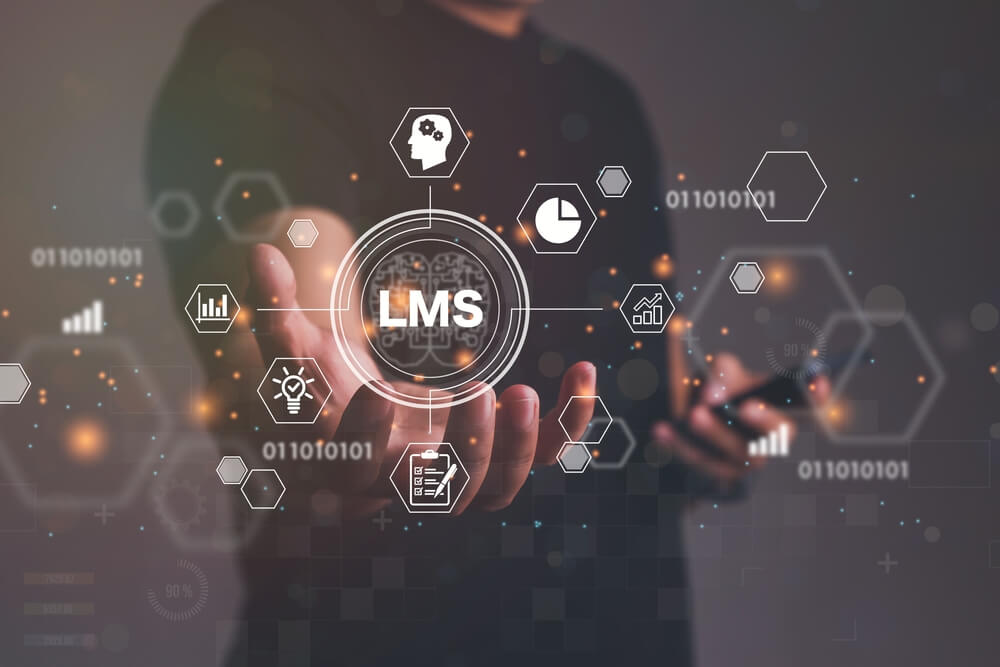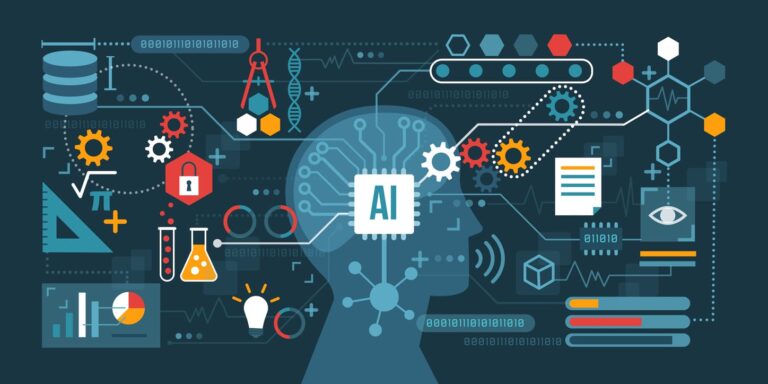The Development Of Learning Management Systems (LMS)
The Development Of Learning Management Systems (LMS). Hey there! Have you ever wondered how Learning Management Systems (LMS) have developed over the years? I know I sure have. As someone who works in the education field, I’m always interested to learn about new technologies that can make a difference in students’ learning experience.
Well, if you’re like me and want to find out more about the history of LMSs, then this article is for you! Here, we’ll explore the development of these systems across time and examine what impact they’ve had on teaching practices.
So let’s get started!
An Overview Of Learning Management Systems
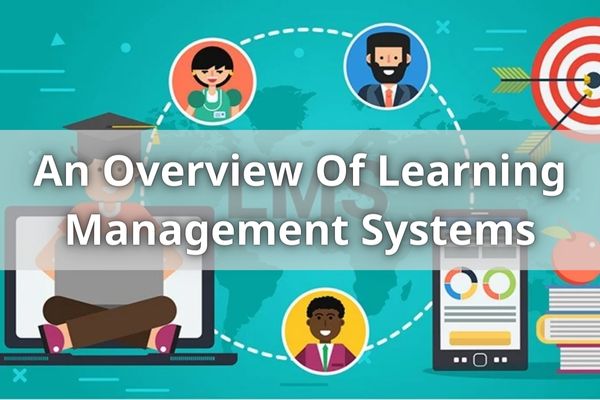
I’m sure you’ve heard of learning management systems (LMS) before, but do you know what they really are and how they work?
An LMS is a type of software that helps teachers and students create an online learning environment, keeping pace with the booming popularity of MOOCs. It creates a learning platform for students to access course materials, take assessments, collaborate with peers, and receive feedback or grades from instructors. In short, an LMS provides the infrastructure necessary for creating a successful virtual learning experience, aligning with the increasing demand for MOOCs.
The core elements of any good learning management system include content delivery tools, communication tools, assessment tools, collaboration features, tracking/reporting capabilities and support for SCORM-compliant packages.
Content delivery can range from:
- Simple text documents to complex multimedia presentations
- Communication tools allow learners to communicate with each other as well as their instructors
- Assessment tools enable measuring student learning progress through quizzes and tests
- Collaboration features enable group projects in which multiple users can work together on tasks
- Tracking/Reporting enables administrators to monitor the performance of individual learners over time
- SCORM compliance allows courses developed by third parties to be deployed within the LMS seamlessly.
In summary then, an effective Learning Management System should provide all the essential components needed for creating a rich educational environment. With this foundation in place it’s possible to build engaging experiences that promote collaboration among learners while providing educators with insights into student progress. With these goals realized we can move forward to explore the history of LMS and its evolution over time.
The History Of LMS
I remember when learning management systems (LMS) first became popular – it felt like a revolutionary change in how we were able to access and utilize educational materials! Today, LMS platforms are ubiquitous and provide an invaluable service for online learners.
The history of the modern-day Learning Management System began with the development of web-based tools that allowed for easier distribution of learning materials. These tools gradually evolved into full-fledged platforms, allowing students to engage with multimedia content and collaborate with peers through discussion forums or chat rooms.
With advances in technology came further improvements; now there are dozens of different features, including emerging tech innovations, available on many LMS platforms.
- Automated grading systems
- Digital whiteboards
- Audio/video conferencing capabilities
- Online assessments
- Customizable course layouts
- And more!
These advanced features have made it possible for educators to create engaging lessons that cater to their students’ individual needs. As such, they help make complicated topics much easier to understand while providing an immersive experience that was not previously possible.
Without a doubt, Learning Management Systems have come such a long way since their initial introduction – and I’m sure they will continue to evolve as technology progresses. It’s time now to explore the numerous benefits these powerful tools offer users today.
Benefits Of LMS
Well, now that we have looked at the history of Learning Management Systems (LMS), let’s take a look at some of the benefits they offer.
LMS are incredibly useful tools for course management and provide an efficient way to manage learning content and educational content. They can be used in numerous ways, such as organizing lessons, creating online assessments, tracking student performance, providing feedback on assignments or even allowing students to collaborate with each other.
The convenience offered by these learning systems is invaluable since it allows teachers to save time when preparing materials or distributing them among their students. Moreover, due to its automated features, instructors don’t need to spend hours manually grading tests or assignments; this saves valuable teaching sessions which can then be put towards more meaningful activities like discussions and collaborative projects.
Additionally, with LMSs being web-based applications integrated into multiple devices, there’s no limit to where you can go while still accessing your resources!
Overall, it’s easy to see why LMSs are becoming increasingly popular in education today – they allow educators access to a wealth of material without having to devote too much time away from their core duties in the classroom.
Now that we’ve discussed the advantages of using Learning Management Systems (LMS), let’s explore the challenges associated with these technologies.
Challenges Of LMS
I’m sure we can all agree that Learning Management Systems (LMS) are an invaluable part of education. They provide a platform for instructors to create engaging learning activities, track progress against learning goals, and manage course content with ease.
But there are some challenges associated with using LMSs such as Moodle or other instructor-led training services.
Here are 3 key issues when it comes to implementing an effective LMS:
- Incompatible technology platforms – If the hardware used by students isn’t compatible with the software being used, it makes it difficult to get everyone on board and participating in courses.
- Lack of user engagement – Without adequate content creation and instruction from teachers, students may become bored and apathetic about their learning experiences within the LMS environment.
- Difficult navigation processes – Poorly designed interfaces can make navigating through different sections of information difficult and time consuming; which could be frustrating for users trying to access specific pieces of data quickly.
These technical difficulties can often lead to frustration among learners that impacts their overall experience negatively. It is important for educators to consider these potential roadblocks before they decide whether or not they want to use an LMS in their classroom setting.
Moving forward, let’s look at how open source platforms offer more flexibility and customization options than traditional solutions like Moodle do.
Open Source Platforms
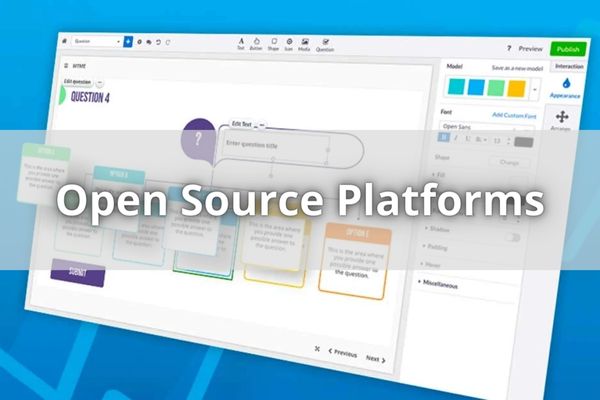
Open source platforms have become increasingly popular in the development of learning management systems (LMSs). This is due to their ability to be customized and adapted for different types of organizations.
Open-source software is usually developed by communities of developers who collaborate on a project, making it freely available for anyone interested in using or improving it. These open-source LMSs come with built-in authoring tools that allow users to create content quickly and easily, as well as make any necessary changes or updates without needing advanced computer skills. They are also highly scalable, meaning they can be used across various sizes of organizations from small businesses to large corporations.
The popularity of open source LMSs has grown rapidly since the late 1990s when the first free versions were released. Today, many educational institutions are turning towards these solutions because they offer more flexibility than proprietary options while still providing all the same features required for teaching and learning activities. Plus, there’s no need to pay expensive licensing fees which makes them an attractive option for those looking to save money while still getting quality performance out of their system.
With open source LMSs becoming more widely accepted, we now turn our attention to customization—how do you customize your platform so that it meets the specific needs of your organization?
Customization Of LMSs
It’s no secret that Learning Management Systems (LMSs) are revolutionizing the way we access and understand content. As technology advances, so does the ability to customize our learning experience.
Here is why customization of LMSs should be a priority for anyone looking to get the most out of their learning:
- Customizable user interface: With web-based platforms like Moodle or Blackboard, users can tailor how they interact with an LMS by customizing the look and feel according to their individual needs. This makes it easier for them to navigate through content that might otherwise be overwhelming or confusing.
- Content tailored into an LMS: By adding personalized content to an existing platform, organizations can leverage the use of Learning Management Systems more effectively within their organization. This allows learners to gain deeper insights from course materials while also providing valuable feedback on areas where improvements could be made.
- Personalized learning experiences: With a customized LMS, individuals have greater control over how they learn and access information within a system, allowing them to create unique learning paths based on their own interests and goals. This helps ensure that learners stay engaged throughout each lesson as well as providing educators with data about what works best for different types of students.
Moving forward, cloud-based LMSS provide new opportunities for personalization due to its scalability and accessibility across devices – something that shouldn’t go overlooked when planning your next educational venture!
Cloud-Based LMSs
Wow! Cloud-based LMSs have revolutionized the way we learn. They provide a convenient and accessible learning experience that can be accessed from anywhere with any device. So let’s dive into what exactly these cloud-based systems are and how they impact our learning experiences.
Cloud-based LMS software allows learners to access their courses, materials, assignments, grades, and more anytime and anywhere there is an internet connection. This means that students no longer need to log onto computers at physical locations such as schools or libraries in order to complete coursework or view content related to their classes. Additionally, it also simplifies e-learning for instructors by providing them with tools to create engaging virtual classrooms and capture student engagement metrics quickly and easily.
The following table outlines some of the features associated with cloud-based LMSs:
With cloud-based LMSs, users benefit from increased convenience via remote access along with cost savings due to reduced hardware maintenance requirements. Furthermore, scalability helps ensure that the system meets user demands while compatibility with mobile devices makes sure all participants have equal opportunities regardless of location or device type. All of these features combine together to create an improved overall learning experience for everyone involved.
Moving on from cloud-based systems, let’s explore how mobile technology has changed the landscape of education even further…
Mobile Learning
It’s no secret that mobile learning has changed the way learners experience education. As software development continues to advance, LMSs are becoming more and more accessible on mobile devices.
Mobile learning has enabled digital learning to become an even greater part of our lives than ever before!
From classroom lectures to online quizzes, students can now access their course material from anywhere via a smartphone or tablet.
With these updated capabilities, educators have been able to tailor instruction in ways not previously possible. This allows for increased flexibility when it comes to both teaching styles as well as delivery methods.
Mobile technology is rapidly changing the landscape of education today, and with it come exciting opportunities for learners everywhere.
It’s important that we continue looking towards new technologies and developing creative solutions for how best to utilize them in engaging students in meaningful ways.
Moving forward into the realm of social learning provides us with yet another avenue through which educational institutions may explore this innovative field further.
Social Learning
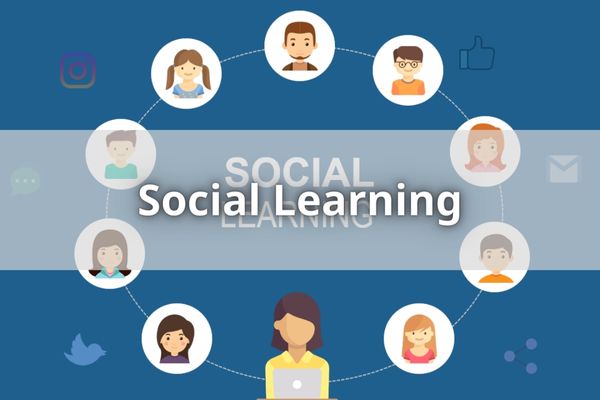
Social learning is an important aspect to consider when developing a Learning Management System. It allows users to interact with each other, collaborate on projects and discuss topics related to the course material.
With social learning, authors can integrate different types of activities such as forums, chats and gamification into the LMS dashboard for admins and learners alike. This feature makes it easier for instructors to keep track of student progress while also providing them with more interactive ways to engage their students in lessons.
The integration of social learning tools within an LMS provides both administrators and instructors with great flexibility in terms of how they deliver their content to their audiences. Not only does this allow them to create engaging experiences that are tailored towards individual user needs, but it also gives them greater control over who has access to resources and what kind of feedback they receive from others.
Additionally, these features provide valuable insight into how individuals learn best which can be used by admins and authors when designing future of learning courses management systems or managing existing ones.
With all these benefits combined, it’s easy to see why many institutions have adopted social learning tools as part of their overall strategy for creating a successful online environment where users can learn effectively. Moving forward, transitioning into artificial intelligence in LMSS will help take our understanding of user behavior even further so we can continue offering relevant and personalized experiences that meet modern learner expectations.
Artificial Intelligence In LMSs
We’ve come to an exciting point in the development of learning management systems (LMSs): the use of artificial intelligence. AI has revolutionized many industries, and now it’s time for LMSs to benefit from this powerful technology too!
Here are 4 ways that AI can be incorporated into LMS usage:
- LMSs allow users to build customized content tailored to their individual needs with using an LMS. Artificial Intelligence can help optimize these tools for efficient and effective use.
- AI-driven analytics gives a greater understanding of user behaviour when using an LMS, allowing administrators to make better decisions on how best to adapt and improve the experience.
- Using an LMS to create personalized courses is becoming more popular as learners seek out specific topics within broader curriculums; AI can provide insights into which areas need additional focus or improvement so that each student gets the most out of their coursework.
- Lastly, AI can automate certain processes within an LMS such as grading tests and providing feedback, freeing up faculty members’ valuable time while also ensuring accuracy in results.
It’s clear then that incorporating AI into learning management systems offers numerous advantages both in terms of efficiency and effectiveness – but what does this mean for the future?
The Future Of LMSs

I’m excited to see what the future holds for LMSs. As technology evolves, so do our learning management systems. There are a number of ways they can be improved to make it easier and more efficient to onboard new learners, store information, and facilitate the entire learning process in an effective way.
One area that will likely see improvement is the format in which content is delivered. At present, most courses consist of text-based materials such as PDFs or HTML files, but with advances in technology we might start seeing integrated video lectures and interactive content pop up much more often. This would open up many more possibilities for blended learning approaches, adding variety while still maintaining structure.
Another great advantage of modern LMSs is their ability to automate processes like tracking student progress, sending out reminders about upcoming tests or assignments due dates, and grading quizzes or exams quickly and efficiently.
With this automation comes increased accuracy of data collection and reporting capabilities – invaluable tools when assessing learner performance over time. In short, these features offer a huge potential for streamlining workflows within any organization providing educational services.
Conclusion
In conclusion, an LMS is a great tool to help educators and students learn more efficiently. It’s important to understand the cost of implementation and setup time as well as any security risks before implementing one.
Additionally, making sure that your system is user-friendly should be a priority in order to ensure a smooth experience for everyone using it.
Finally, technical support should always be available just in case you need assistance with anything related to the use of the LMS. With all these considerations in mind, I’m confident that an LMS can bring great benefits to learning environments everywhere!

